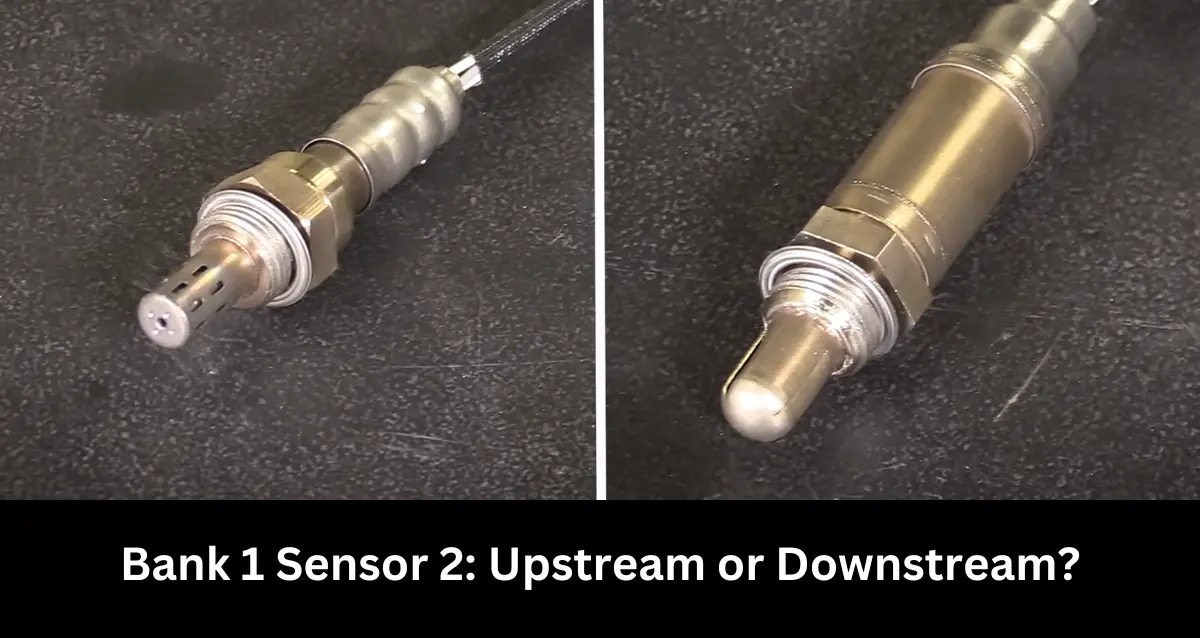Is Bank 2 Sensor 1 Upstream Or Downstream

The eternal question plagues shade-tree mechanics and seasoned professionals alike: Bank 2 Sensor 1 – is it upstream or downstream? The answer, frustratingly, isn't always a simple "yes" or "no." It’s a rabbit hole of engine configurations, model variations, and manufacturer quirks. Let’s dive in and clear up the confusion, car enthusiast style.
Understanding the Basics: Location, Location, Location!
First, a quick refresher. Oxygen sensors (O2 sensors) are critical components in your car's emissions control system. They measure the amount of oxygen in the exhaust gas, allowing the engine control unit (ECU) to adjust the air-fuel mixture for optimal combustion and minimal pollution. We classify them by "bank" and "sensor number."
- Bank 1: The side of the engine containing cylinder #1. On inline engines, there's only one bank.
- Bank 2: The opposite side of the engine from Bank 1 (typically on V-engines or horizontally opposed engines).
- Sensor 1: Always the sensor *upstream* of the catalytic converter. This is the "pre-cat" sensor.
- Sensor 2: Always the sensor *downstream* of the catalytic converter. This is the "post-cat" sensor.
So, the core answer is: Bank 2 Sensor 1 is always upstream of the catalytic converter on bank 2 of the engine. But the devil is in the details – *where* upstream is what really matters and changes between models!
The V6 vs. the Inline-4: A Tale of Two Banks (or One)
Let's illustrate with two popular engine types.
The V6 Scenario (e.g., Toyota Camry V6, Honda Accord V6)
A V6 engine has two banks of cylinders, neatly arranged in a "V" configuration. Consequently, it has two separate exhaust manifolds and usually *two* Bank 1 Sensor 1 and Bank 2 Sensor 1 sensors. Finding Bank 2 can sometimes be tricky. On a transversely mounted V6 (like in many front-wheel-drive cars), it's often the bank further towards the firewall, making access a pain.
Real-World Driving Impression: A failing Bank 2 Sensor 1 on a V6 often results in a noticeable drop in fuel economy and potentially a rough idle. The ECU struggles to maintain the correct air-fuel ratio on that specific bank, leading to inefficiencies.
The Inline-4 Scenario (e.g., Honda Civic, Mazda3)
An inline-4 engine only has one bank of cylinders. Therefore, you *won't have a Bank 2*. You'll only have Bank 1 Sensor 1 (upstream) and Bank 1 Sensor 2 (downstream). Trying to diagnose a Bank 2 sensor on an inline-4 is a guaranteed wild goose chase!
Real-World Driving Impression: Because there's only one bank, a failing Bank 1 Sensor 1 has a more pronounced impact on overall engine performance. Stalling, hesitation, and poor fuel economy are common symptoms.
Spec Table: Location Variance
| Vehicle Model | Engine Type | Bank 2 Location Notes | Typical Access Difficulty |
|---|---|---|---|
| Toyota Camry V6 (2012-2017) | 3.5L V6 | Bank 2 is the rear bank, closer to the firewall. | High. Requires some disassembly to reach. |
| Honda Accord V6 (2013-2017) | 3.5L V6 | Bank 2 is the rear bank, partially obscured by intake manifold. | Medium to High. Access is tight. |
| Subaru WRX (2015-2021) | 2.0L Turbo Horizontally Opposed | Bank 2 is typically the driver's side. | Medium. Good access generally. |
| BMW 328i (F30) | 2.0L Turbo Inline-4 | Does not have a Bank 2. Only Bank 1. | N/A |
Pros and Cons: The Headache of Bank 2 Sensor 1 Replacement
Pros:
- Improved Fuel Economy: Replacing a faulty sensor can restore optimal air-fuel ratios, boosting MPG.
- Reduced Emissions: A working sensor helps your car meet emissions standards.
- Smoother Engine Performance: Eliminates rough idling and hesitation.
Cons:
- Accessibility: Bank 2 Sensor 1 can be a pain to reach, especially on V-engines.
- Sensor Seizure: Older sensors can become seized in the exhaust manifold, requiring penetrating oil, heat, or specialized tools.
- Cost: Oxygen sensors aren't cheap, especially if you opt for OEM replacements.
Beyond the Basics: Wideband Sensors and Forced Induction
Modern cars, particularly those with forced induction (turbochargers or superchargers), often use *wideband* O2 sensors upstream. These sensors provide a more precise and wider range of air-fuel ratio readings compared to traditional narrowband sensors. The placement remains the same (Bank 2 Sensor 1 is still upstream), but the technology is more sophisticated.
Furthermore, be aware that some performance aftermarket exhaust systems may modify or eliminate catalytic converters, affecting the sensor placement and function. Proceed with caution and professional advice when modifying your exhaust system.
Important Safety Note: Always disconnect the negative battery cable before working on any electrical components of your car, including oxygen sensors. Ensure the exhaust system is cool to avoid burns.
So, there you have it. The answer to the Bank 2 Sensor 1 riddle is nuanced, dependent on your engine configuration. Always consult your vehicle's repair manual for specific locations and procedures. And remember, if you're unsure, seek the help of a qualified mechanic.
Disclaimer: This article provides general information and should not be substituted for professional automotive advice. Always consult your vehicle's repair manual and/or a qualified mechanic for specific guidance.
Fun Note: Okay, let's get the debate going! Is it *ever* okay to use an O2 sensor spacer (aka "defouler") to trick the ECU into thinking the catalytic converter is working properly after a modification? Weigh in on the ethics and potential consequences! Are you team "never" or team "it depends?"
